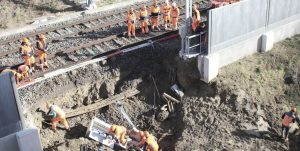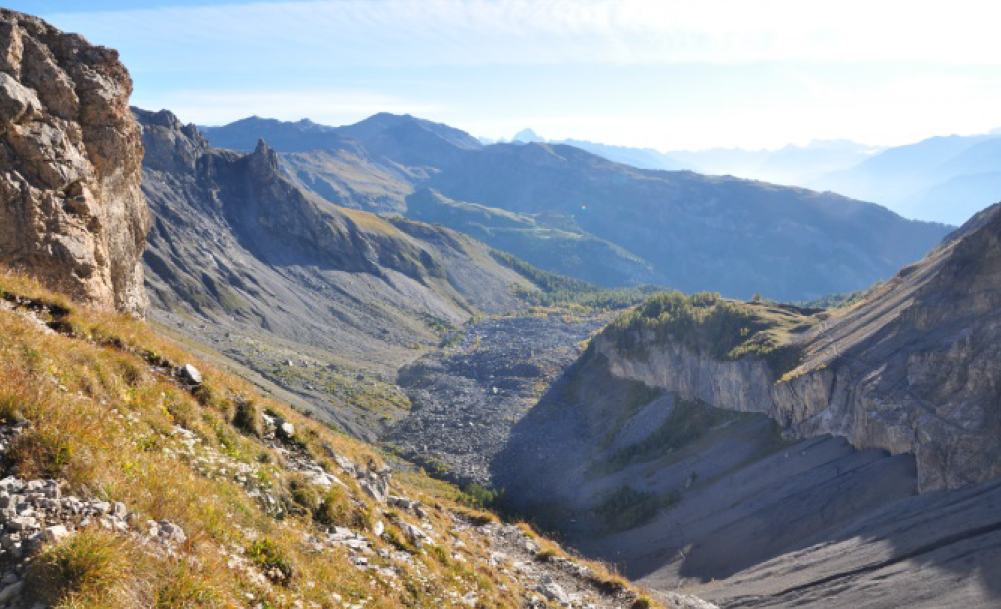Amenan Agnès Kouame
Directors: Prof. Michel Jaboyedoff and Prof. Albert Goula Bi Tié
Jury: Prof. François Zwahlen, Dr. Marc-Henri Derron, Dr. Jean Kouame Kan, Prof. Erkman Suren
This study on the aquifer of the Continental Terminal is carried out in the Abidjan District located on the coastal sedimentary basin in southern Côte d’Ivoire (West Africa). This unconfined aquifer of the city of Abidjan of Mio-Pliocene age is called “Abidjan groundwater”. The water quality of this aquifer is facing with diverse sources of anthropogenic pollution such as scattered deposits of solid and liquid wastes of all kinds. Indeed, the inadequacy of sanitation and drinking water supply systems increases the pollution risk of the Abidjan’s groundwater. Besides, the proliferation of petrol stations, including tank breaking, needs to be considered in the event of an accident, which poses a real threat to groundwater given the complex hydrogeological structure of the region. In order to ensure the effective protection and management of the Abidjan water table, this work proposes to evaluate the risk of contamination of groundwater in the Abidjan aquifer by hydrocarbons such as benzene for the purpose of the implementation of protective measures. To achieve such an objective, a model of underground flow and contaminant transfer was designed from field data and literature. Soil analysis showed two types of soils: sand and silty sand. Using the FEFLOW software, the predictive simulation of underground flow coupled with the transport of dissolved benzene deposited on the soil surface at the N’Dotré and Anador station was implemented. Dissolved benzene initial concentrations are 43.12 and 14.17 mg/l for the two sites respectively for variably saturated zone. The results revealed that a borehole named ZE11 of the “Zone Est”capture field is polluted after 44 years and 2 months because the threshold concentration of 0.001 mg/l is reached. A maximum concentration of 0.011 mg/l is reached at this drilling at 47 years and 2 months. In this zone, 5 other wells in this Zone, ZE1, ZE7, ZE8, ZE13, ZE14 are threatened by pollution because the dissolved benzene was detected after a time ranging from 39 to 46 years. The ZE10 has even recorded a maximum concentration of 0.0008 mg / l in 46 years. The average distance from Anador site these is 4 km. At an average distance of 2 km from the N’Dotré service station, 8 boreholes belonging to the Anonkoua Kouté, AK15 AK5, AK6, AK7, AK8, AK10 AK4 and AK17, are also threatened by pollution, dissolved benzene has been detected. for a time between 38 to 47 years.
With the software, HYDRUS, for an initial concentration of 2 mg/cm3, the dissolved benzene sets 105, 112 and more than 365 days to cross the 100 cm cylinder of sand, silty sand and clay respectively, taking into account the delay. Without delay, these times are reduced to 100, 80 and 50 days respectively for clay, silty sand and clay. Considering the sand material, the pollutant takes more than 7 years to cross the average thickness of the unsaturated zone 56 m.
During its journey, if the pollutant crosses channels, these global times could be 10 to 100 times shorter. Therefore, special attention should be given to the sites of N’Dotré and Anador in case of rupture of the tank especially as this tablecloth of Abidjan is the only source of drinking water in the District of Abidjan. The method of decontamination of the unsaturated zone proposed is “bioventing” taking into account the high percentage of sand that constitutes the soil of the District of Abidjan geological formations.


